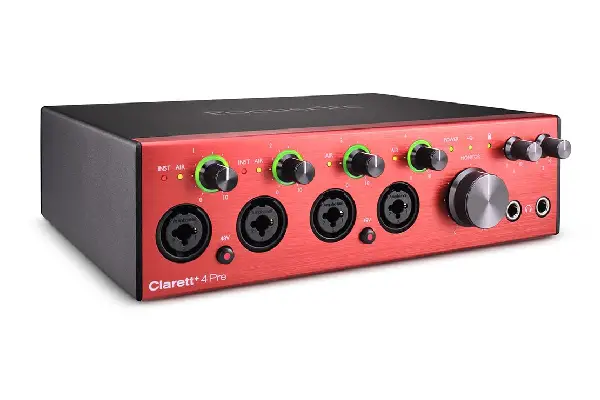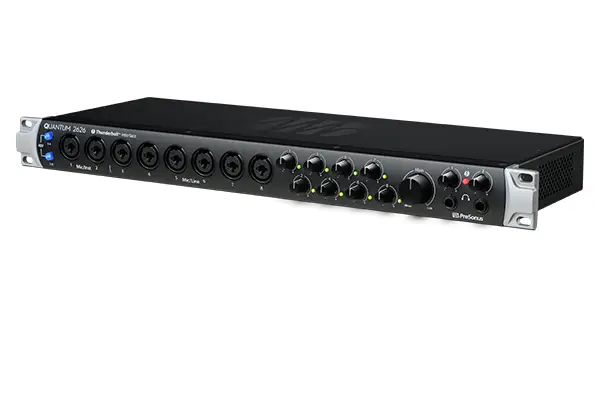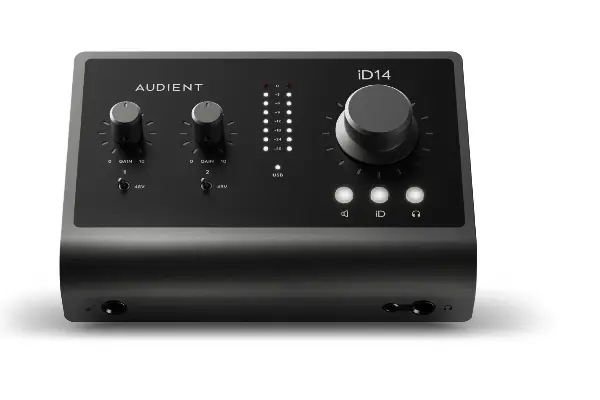When you’re working with Ableton Live, your audio interface becomes the critical bridge between your digital ideas and the analog world—and after years of testing countless units in various studio environments, I’ve learned that choosing the right interface can make or break your production workflow. The best audio interfaces for Ableton need to deliver rock-solid driver stability, minimal latency, and pristine conversion quality while keeping pace with the software’s demanding real-time processing. Whether you’re tracking live instruments, integrating hardware synthesizers, or performing with a controller-heavy setup, the interface you choose fundamentally shapes your creative experience.
The relationship between Ableton and your audio interface goes deeper than most producers initially realize. I’ve experienced firsthand how an underpowered interface can bottleneck even the most powerful computer, creating frustrating latency issues that disrupt the intuitive workflow Ableton is known for. Conversely, a properly matched interface transforms the software into an incredibly responsive creative tool where ideas flow from your mind directly into your DAW without technical friction getting in the way.
| Interface | Key Features | Pros | Cons |
|---|---|---|---|
| Universal Audio Apollo Twin X DUO | Unison preamps, SHARC DSP, Thunderbolt 3, desktop interface, Console app integration | Zero-latency DSP tracking, excellent Unison preamps, premium build, seamless with Ableton, stable low-latency performance | Expensive, limited DSP on DUO, UAD plugins cost extra, requires Thunderbolt 3 |
| Focusrite Clarett+ 4Pre | 4 Air preamps, 8 inputs, ADAT expansion, Focusrite Control software, metal chassis | Great price/performance, clean preamps with Air mode, stable drivers, strong software bundle, durable build | Runs warm, no DSP, requires learning Control software, no MIDI I/O |
| PreSonus Quantum 2626 | Thunderbolt 2/3, 26 inputs, XMAX preamps, ultra-low latency, DC-coupled outputs | Extremely low latency, massive I/O count, clean preamps, modular-synth friendly, rack-ready build | Needs Thunderbolt, overwhelming for beginners, high power usage, learning curve |
| Audient iD14 MKII | Class-A Audient console preamps, JFET DI, ScrollControl, ADAT expansion, desktop unit | Professional preamps, excellent build, workflow-boosting ScrollControl, ADAT expandable, strong value | Only 2 preamps, no DSP, USB 2.0, rear monitor outputs less convenient |
| Native Instruments Komplete Audio 6 MKII | 4 inputs, MIDI I/O, USB-powered, metal chassis, NI software integration | Great entry-level value, clean preamps, MIDI I/O included, portable build, NI ecosystem compatible | Limited preamp gain, no ADAT expansion, basic routing, lighter software bundle |
Universal Audio Apollo Twin X DUO

The Apollo Twin X DUO represents Universal Audio’s flagship desktop interface, and after months of daily use in both mixing and tracking scenarios, it’s become an indispensable part of my Ableton setup. This interface delivers exceptional audio quality through UA’s renowned Unison preamp technology, which authentically models classic analog preamps and their impedance characteristics in real-time. The SHARC DSP processing allows you to track through UAD plugins with essentially zero latency, which fundamentally changes how you work—I find myself committing to tones during recording rather than endlessly tweaking in post-production.
What sets the Apollo Twin X apart in Ableton workflows is its seamless integration between hardware processing and software flexibility. The Console application runs alongside Ableton, letting you build elaborate monitoring mixes with UAD effects that don’t tax your computer’s CPU at all. The Thunderbolt 3 connectivity ensures rock-solid performance even when pushing buffer sizes down to 32 samples for ultra-responsive MIDI controller work.
The build quality reflects Universal Audio’s professional heritage—the all-metal chassis feels substantial without being cumbersome, and the large central monitor knob provides precise, stepped volume control that’s become second nature in my workflow. One consideration worth mentioning: the DSP chip in the DUO version limits you to running several plugins simultaneously, and UAD plugins can be expensive investments on top of the interface itself (though they frequently appear in my compare headphones testing because the monitoring accuracy reveals their quality immediately).
Pros:
- Exceptional preamp quality with Unison technology
- Onboard DSP processing eliminates latency for tracking
- Thunderbolt 3 provides ultra-stable, low-latency performance
- Professional build quality and intuitive hardware controls
- Seamless integration with Ableton Live’s workflow
Cons:
- Higher price point than competitors
- UAD plugin ecosystem requires additional investment
- DUO version has limited DSP resources for power users
- Requires Thunderbolt 3 connection (not USB compatible)
Focusrite Clarett+ 4Pre

Focusrite’s Clarett+ 4Pre has earned its place as a workhorse interface in countless Ableton studios, and my experience with it confirms its reputation for reliability and sonic transparency. The eight inputs provide enough connectivity for small ensemble recording or extensive hardware integration, which I’ve leveraged extensively when incorporating vintage synthesizers and drum machines into Ableton productions. The Air mode on the preamps adds a subtle high-frequency presence that’s particularly flattering on vocals and acoustic instruments without being overbearing—it’s one of those features you don’t realize you’re relying on until you turn it off.
The included software bundle adds considerable value, with the Red 2 and Red 3 plugin suite providing useful mixing tools that complement Ableton’s native devices. I particularly appreciate the hardware monitoring with zero-latency direct monitoring and the flexible routing in Focusrite Control software, which lets you create complex cue mixes for collaborators without interrupting your Ableton workflow. The metal chassis feels professional and tour-ready, though the unit does run slightly warm during extended sessions (not problematically so, but worth noting if rack mounting in confined spaces).
Pros:
- Excellent preamp quality with useful Air enhancement
- Eight inputs with ADAT expansion for growing setups
- Rock-solid driver stability across platforms
- Comprehensive software bundle included
- Professional build quality at competitive pricing
Cons:
- Runs moderately warm during extended use
- No onboard DSP for plugin processing
- Control software requires separate installation and learning
- MIDI I/O absent (requires separate interface)
PreSonus Quantum 2626

The PreSonus Quantum 2626, I’ve come to appreciate it as perhaps the ultimate interface for Ableton users who refuse to compromise on I/O count or latency performance. The Thunderbolt 2 connection (with Thunderbolt 3 compatibility via adapter) delivers round-trip latency as low as 1.8ms at 96kHz, which feels genuinely instantaneous when playing software instruments or triggering clips in Ableton’s Session View. This responsiveness transforms how you interact with the software—suddenly, complex virtual instruments feel as immediate as hardware synthesizers sitting on your desk.
The twenty-six simultaneous inputs provide extraordinary flexibility for complex production scenarios. I’ve used the Quantum to simultaneously track a small jazz ensemble while maintaining multiple hardware synthesizer returns and a separate talkback system, all within a single Ableton session. The XMAX preamps deliver clean, transparent gain with plenty of headroom—they’re not as colored as boutique preamps, but that neutrality proves advantageous when you’re applying Ableton’s extensive processing and effect chains. The DC-coupled outputs are a thoughtful inclusion that allows the interface to send control voltage to modular synthesizers, bridging the gap between Ableton’s digital precision and analog modular unpredictability.
Build quality meets professional studio standards with rack-mountable construction and metal chassis throughout. The unit integrates seamlessly with PreSonus’s StudioOne software, though it performs equally well with Ableton (where I do 90% of my work). One practical consideration: the Quantum’s extensive I/O and professional feature set assumes you have the infrastructure to take advantage of it. If you’re primarily working with a couple of microphones and some MIDI controllers, you’re paying for capabilities you may never utilize. However, for producers integrating substantial hardware or recording multiple sources simultaneously, it’s difficult to find better value in this I/O density (similar to how I approach testing multiple units when I compare earbuds for different use cases).
Pros:
- Exceptional low-latency performance via Thunderbolt
- Extensive I/O with 26 simultaneous inputs
- XMAX preamps deliver clean, transparent sound
- DC-coupled outputs for modular synthesizer integration
- Professional build quality and rack-mountable design
Cons:
- Requires Thunderbolt connection (additional adapters for TB3)
- Overwhelming feature set for basic production needs
- Control software learning curve for new users
- Higher power consumption than compact interfaces
Audient iD14 MKII

The Audient iD14 MKII punches well above its compact form factor, delivering professional-grade preamps and conversion in a desktop-friendly package that’s become my go-to recommendation for Ableton users working in limited spaces. After extensive testing across various production scenarios, the Audient Class-A preamps consistently impressed me with their clarity and headroom—these are the same discrete circuits found in Audient’s large-format consoles, providing genuinely professional sound quality without the corresponding price tag or footprint. The JFET instrument input handles high-output pickups with ease, maintaining clarity even when tracking aggressive playing styles.
What makes the iD14 MKII particularly well-suited for Ableton workflows is its intelligent feature implementation. The ScrollControl function transforms the large monitor knob into a virtual scroll wheel for your DAW, letting you adjust plugin parameters without reaching for your mouse—a subtle workflow enhancement that becomes indispensable once you’ve experienced it. I’ve found this especially useful when making quick level adjustments to Ableton’s Compressor or EQ Eight while keeping my hands on my MIDI controller. The two optical inputs provide valuable expansion capability via ADAT, effectively doubling your input count when paired with an external preamp (something I regularly do when tracking drums or larger ensembles).
The build quality feels reassuringly solid despite the compact dimensions, with a metal chassis that’s survived my notoriously cluttered desktop environment without complaint. Audient’s ARC (Audient Remote Control) software provides flexible routing and monitoring options, though I appreciate that basic operation doesn’t require diving into software—the hardware controls handle most day-to-day tasks intuitively. The included speaker switching is particularly handy for A/B testing mixes on different monitoring systems, a critical step in the mixing process that connects naturally to choosing appropriate playback systems (much like the considerations when exploring songs across different audio systems).
Pros:
- Professional-grade Class-A preamps in compact format
- ScrollControl feature enhances DAW workflow integration
- ADAT expansion via optical inputs
- Excellent build quality and intuitive operation
- Strong value proposition for sound quality delivered
Cons:
- Limited to two mic preamps before expansion
- No onboard DSP processing capability
- USB 2.0 connection (adequate but not cutting-edge)
- Monitor outputs on rear panel (less convenient for frequent switching)
Native Instruments Komplete Audio 6 MKII

Native Instruments’ Komplete Audio 6 MKII deserves recognition as an outstanding entry-point interface that doesn’t compromise on essential features, and my time with it has revealed a well-executed product that serves Ableton users particularly well. The six-channel I/O provides sufficient connectivity for most bedroom and project studio scenarios—four inputs accommodate simultaneous recording of vocals, guitar, and a stereo keyboard or drum machine, which covers the vast majority of home production needs. What struck me immediately was the preamp quality at this price point; while they don’t match boutique units costing several times more, they deliver clean gain and low noise that translates well in finished productions.
The integration with Native Instruments’ Komplete software ecosystem adds substantial value, particularly for Ableton users who frequently work with NI’s extensive virtual instrument library. The interface feels optimized for the hybrid workflow many modern producers employ—tracking real instruments while triggering software instruments and samples within Ableton’s flexible environment. I’ve produced entire tracks using the Komplete Audio 6 MKII as the central hub, recording guitars and vocals before diving deep into Ableton’s MIDI sequencing and arrangement capabilities, and the interface never became a limiting factor in the creative process.
Build quality meets expectations for the price range—the metal chassis provides adequate protection while keeping weight reasonable for portable setups. The MIDI I/O on the rear panel proves invaluable for connecting hardware controllers and synthesizers, eliminating the need for separate MIDI interfaces. One practical limitation worth noting: the preamps don’t provide enormous gain reserves, so particularly quiet sources (like ribbon microphones or soft vocal performances) may require external gain stages. However, for typical recording scenarios with contemporary condenser microphones and standard dynamic mics, the provided gain proves more than adequate. This interface has accompanied me to numerous remote recording sessions and never disappointed—it’s reliable, sounds good, and gets out of your way so you can focus on making music (similar to how appropriate gear choices matter when working with different instruments in various recording contexts).
Pros:
- Excellent value proposition for features delivered
- Integration with Native Instruments software ecosystem
- MIDI I/O included for hardware connectivity
- Solid build quality in portable package
- USB bus-powered operation for mobile recording
Cons:
- Preamps have limited gain reserves for quiet sources
- Basic feature set without advanced routing options
- No ADAT expansion capability
- Software bundle less comprehensive than competitors
Choosing Your Interface: Practical Considerations
Selecting the right audio interface for your Ableton setup ultimately depends on understanding your specific workflow requirements and future growth trajectory. Throughout my years testing interfaces across various production environments, I’ve observed that the most satisfied users are those who honestly assessed their actual needs rather than aspirational specifications. If you’re primarily producing electronic music with occasional vocal overdubs, an interface like the Audient iD14 MKII or Native Instruments Komplete Audio 6 MKII provides everything necessary without overwhelming complexity or unnecessary cost.
For producers integrating substantial hardware—vintage synthesizers, drum machines, outboard effects processors—the expanded I/O of the PreSonus Quantum 2626 or Focusrite Clarett+ 4Pre becomes justified and eventually essential. I’ve witnessed too many producers outgrow limited interfaces within months, forcing expensive upgrades that could have been avoided with more thoughtful initial purchases. However, the inverse also holds true: purchasing an interface with capabilities far exceeding your needs doesn’t improve your music and may actually complicate your workflow with unnecessary features demanding attention.
Driver stability and latency performance deserve particular emphasis in Ableton environments. The software’s real-time warping, extensive plugin chains, and live performance capabilities all benefit from rock-solid, low-latency audio communication. I’ve experienced sessions ruined by unstable interfaces causing audio dropouts during critical recording takes or live performances—an interface that sounds marginally better but crashes regularly ultimately serves no one. Prioritize manufacturers with proven driver development records and active user communities where troubleshooting assistance is readily available.
Frequently Asked Questions
What buffer size should I use with my audio interface in Ableton?
Buffer size selection involves balancing latency requirements against system stability and CPU headroom. For tracking with software instruments or real-time effects processing, I typically work with 64 or 128 sample buffers on modern computers, which provides sufficiently responsive performance without taxing the system excessively. During mixing when latency isn’t a concern, increasing the buffer to 512 or even 1024 samples allows more CPU-intensive processing without audio dropouts. Ableton makes switching buffer sizes straightforward, so I frequently adjust based on the task at hand—tracking demands low buffers for immediate response, while mixing benefits from higher buffers enabling complex processing chains.
Do I need Thunderbolt connectivity or is USB sufficient for Ableton production?
Thunderbolt connectivity provides lower latency potential and higher bandwidth than USB, which becomes relevant primarily when working with high channel counts at elevated sample rates or demanding minimal latency for live performance scenarios. For most production applications, quality USB 2.0 or USB 3.0 interfaces deliver entirely adequate performance—I’ve produced countless tracks using USB interfaces without encountering bandwidth limitations. However, if you’re tracking 16+ channels simultaneously at 96kHz or performing live with complex Ableton sets requiring sub-5ms round-trip latency, Thunderbolt’s advantages become tangible and worth the typically higher investment.
How many inputs do I actually need for producing in Ableton?
Input requirements vary dramatically based on your production approach and recording methods. If you’re primarily creating electronic music with virtual instruments and samples, two inputs suffice for occasional vocal or instrument overdubs. For band recording or extensive hardware integration, consider future needs carefully—I’ve found eight inputs (four mic preamps plus ADAT expansion) accommodates most project studio scenarios including simultaneous drum tracking. Remember that you can always expand via ADAT optical connections on many interfaces, providing cost-effective growth paths as your setup evolves. Consider your realistic recording scenarios over the next few years rather than theoretical maximums.
Should I choose an interface with onboard DSP processing for Ableton work?
Onboard DSP processing provides significant advantages during tracking by enabling zero-latency monitoring through high-quality effects without burdening your computer’s CPU. The Universal Audio Apollo series exemplifies this approach, allowing performers to hear polished tones with compression and reverb while recording dry signals into Ableton for later processing flexibility. However, DSP-equipped interfaces typically cost substantially more than comparable non-DSP alternatives. If you’re primarily working with MIDI and virtual instruments or your tracking sessions involve minimal real-time effects needs, the additional DSP investment may not justify the cost—modern computers handle Ableton’s native effects quite capably at reasonable buffer sizes.
Can I use multiple audio interfaces simultaneously in Ableton Live?
Ableton Live supports aggregate or multi-device setups on macOS relatively straightforwardly through Audio MIDI Setup, allowing you to combine multiple interfaces into a single virtual device with expanded I/O. Windows implementation proves more challenging, often requiring ASIO4ALL or similar third-party drivers with varying stability results. In my experience, running multiple interfaces simultaneously introduces complexity that frequently creates more problems than it solves—clocking conflicts, driver incompatibilities, and configuration headaches often outweigh the benefits. If you’ve genuinely outgrown a single interface’s capabilities, upgrading to a larger interface with sufficient I/O typically provides more reliable performance than attempting to cobble together multiple units.

